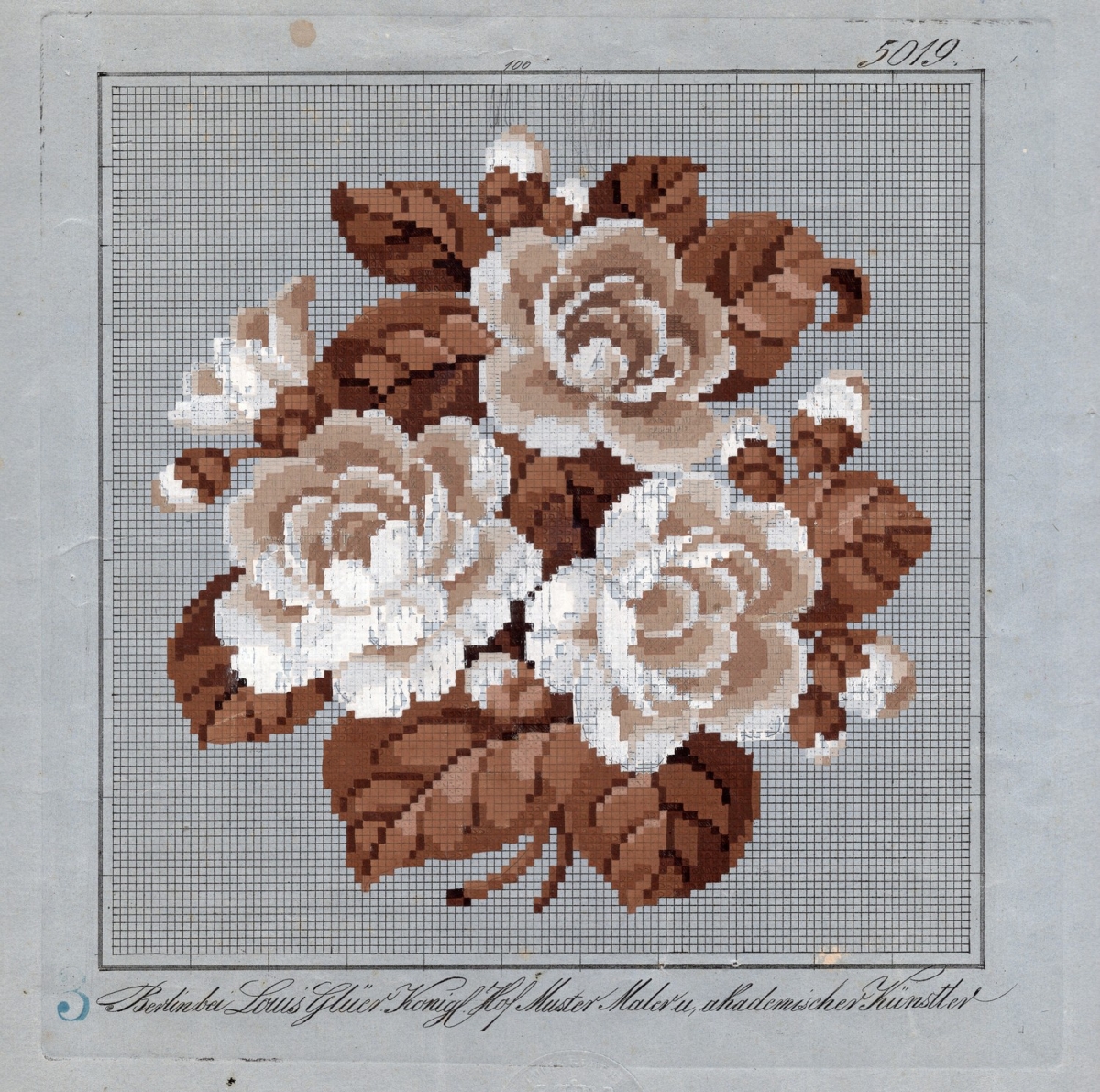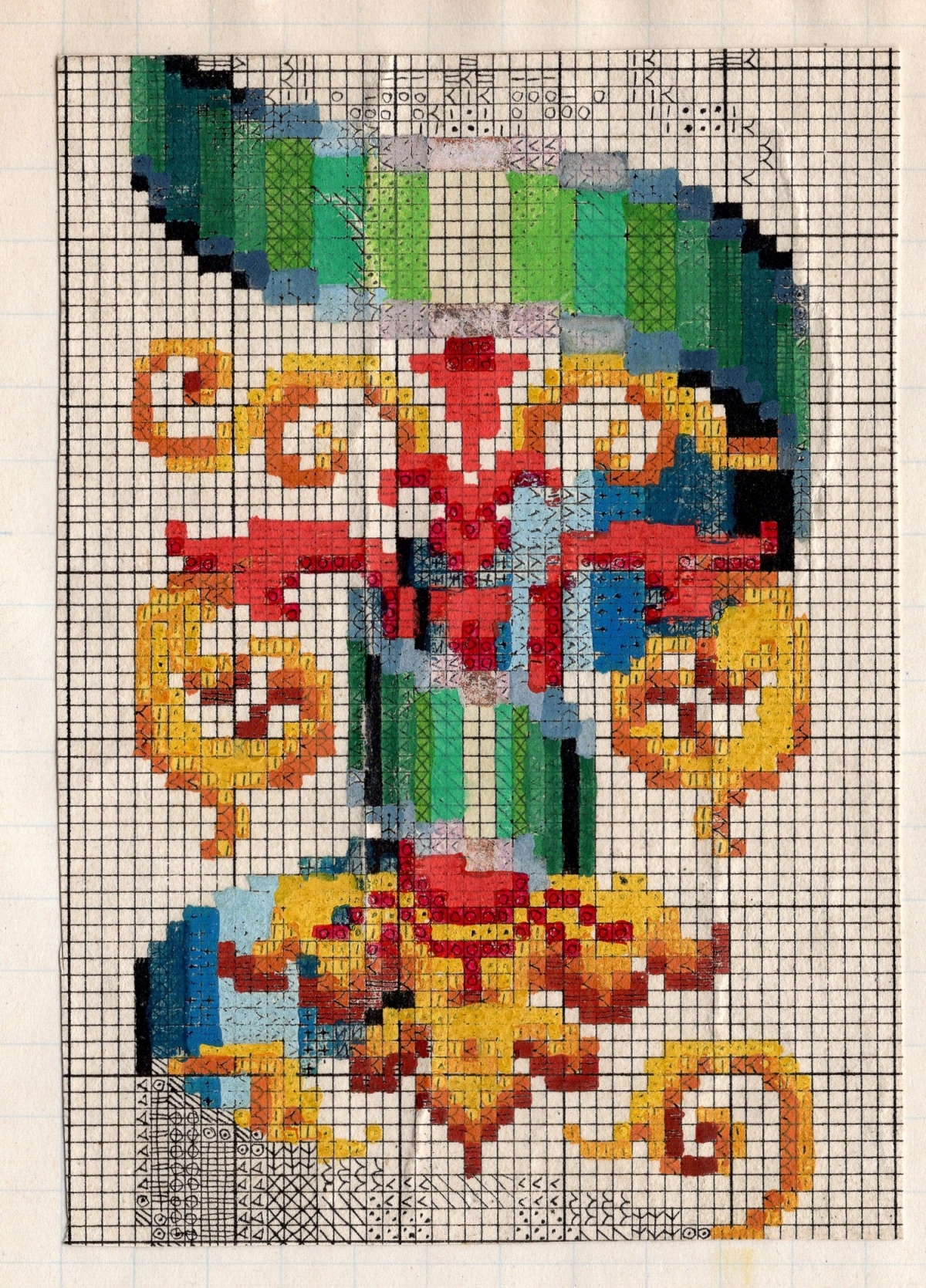Berlin Work Charts
Berlin Work Charts
In April 2018, the TRC was given a collection of fifty original Berlin work charts. The donor was a long-time friend and supporter of the TRC, Mrs. Mariet ter Kuile-Portheine. She acquired these charts in the 1980’s. Most of them date to the mid-nineteenth century. The colours on all of these charts have been applied by hand. Some of them were produced by the Leiden-based firm of A.W. Sijthoff, which was founded in 1851 and still continues to the present day as the publishing firm of Luitingh-Sijthoff. The charts donated by Mrs. Mariet ter Kuile-Portheine form the basis for this online exhibition.
References:
Pat Berman, 'Berlin Work', published in Needle Pointers, Febr./March 1990, and revised in October 2000. Digitally available here (retrieved 8th June 2016).
See also the entry on an embroidered picture 'Girld holding a cat', now in the Victoria and Albert Museum and dated to c. 1840, and to a nappy basket with Berlin wool work decoration.
For Berlin wook work, see also the relevant entry in TRC Needles.
For this online exhibition:
- Author: Gillian Vogelsang-Eastwood
- Web-design: Joost Koopman
- Exhibition design: Willem Vogelsang
- Publisher: TRC Leiden.
- Year of publication: 2018
- Copyright: All illustrations of objects housed in the TRC collection can be used free of charge, but please add to the caption: "Courtesy Textile Research Centre, Leiden" and the pertinent accession number of the object.








